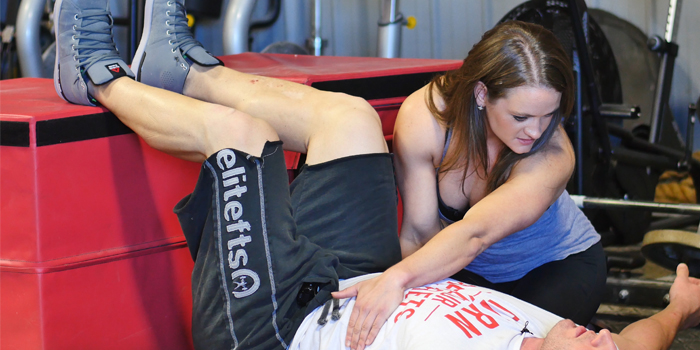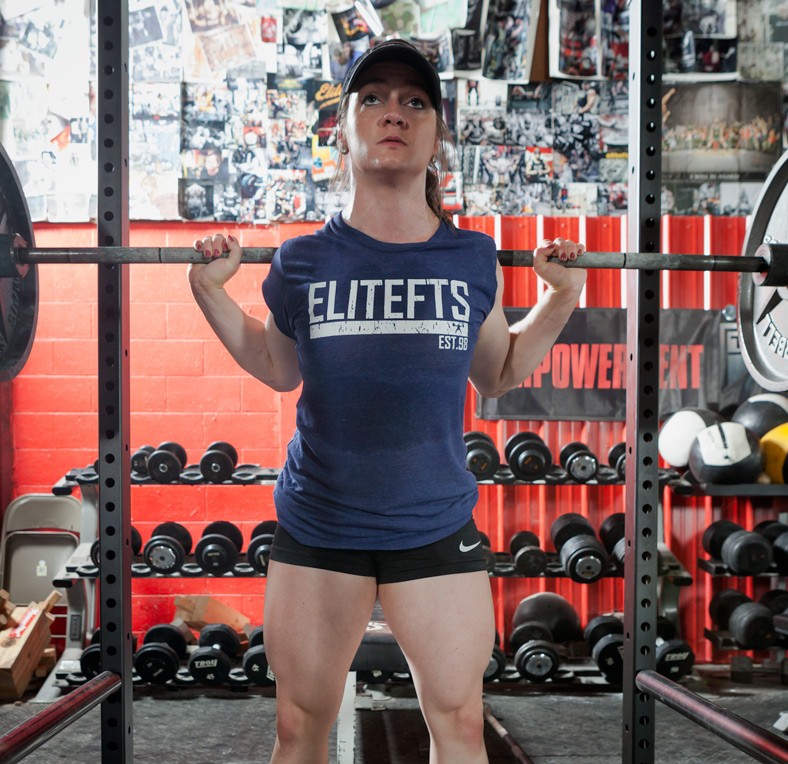
About a month ago, my fiancé and I announced our combined training and rehab for competitive iron athletes. I don’t know if it’s now because I’ve got a big dude on the scenes with me, but the influx of interest in physical therapy and rehab programming has skyrocketed. I've gotta be honest: it’s awesome and really exciting. But with almost every single person that reaches out (the extremes of big dudes and tiny ladies in particular), it's pretty easy to see that there's a positional issue caused by an injury, an attempt to offload an area, or a weakness. It’s nothing groundbreaking, and every coach and athlete alike will probably read this and say, “Duh”, but if I’m getting this much video from people, we’re either underutilizing really powerful tools or utilizing tools without good application.
For positional issues for myself, Dave, and almost every distance and in-person client I’ve worked with, some form of tempo training, well executed, has been a hugely helpful tool.
Tempo training has been highly utilized in a variety of disciplines between bodybuilding, powerlifting, Olympic lifting, and athletic performance for both youth and adult athletes. It has the potential to be highly specialized to meet whatever metabolic demands, fiber type, or performance goal an athlete wants to develop. Some of the best coaches will cite desired effects of muscle fiber types, motor unit recruitment, and metabolic adaptations that they’re intentionally developing in an athlete depending on that athlete’s lifting style or sport performance. Charles Poliquin and Ian King are largely responsible for perpetuating and teaching about the concept. Mike Tuscherer, among others, has spoken openly regarding his thoughts on its application in powerlifting. While a number of coaches have utilized tempo training as preventative and discussed its role in movement quality, I think the use of tempo training in rehab and movement progression is something that we as powerlifters and coaches alike should be utilizing more appropriately, especially in a rehabilitative or transition phase.
RECENT: Utility of the Overhead Press
I want to be clear: There are definite benefits to being as specific and targeted as possible with regards to fiber type, neural adaptations, and the “nerdy” details about coaching and athlete development. That is not the purpose of this article. More than anything, I want to give you as an athlete a tool to use when you aren’t sure how to train through an issue. And to get you thinking about how to handle injury, why it occurs, and subsequent changes you’ll need to make in your training.
When dealing with injury or attempting to escape chronicity, own your position, before anything else. Here are the major benefits of tempo training:
Motor Learning/Position
This is the big one that really sparked the onset of this article. Most times I work with an athlete for rehab rather than coaching purposes, there is breakdown in position that either demonstrates weakness or demonstrates a compensatory mechanism to offload an injured area. I’ve said in numerous other articles that stability is the mother of strength. Developing strength and control throughout a weakened range can force an athlete to own a position more effectively. More than that, my personal opinion is that tempo training when targeted correctly permits improved awareness and conscious control for improved pattern development. If there’s one “thing” I’m learning about compared to others, it’s the role of conscious control for maintenance of position.
This means conscious control of what’s working, what it "feels" like, and actually owning what your body feels like in your squat, rather than just your squat. Lots of people love their mobility work, and there is a time and a place for it (if you can’t access a range of motion, it’s tough to utilize it), but if trying 6000 different mobility solutions isn’t correcting the problem, maybe it’s time to start thinking that mobility isn’t the issue. Perhaps integration and intentional movement is. Intentional movement should lead to an intentional pump, which can improve ability to integrate muscle groups that may be lagging. The proprioception of the pump can be a useful tool even in warm-ups, and again, a way to moderate the concept of conscious control of your training.
Hypertrophy
It’s fair to say that decreased muscle mass can result in increased incidence of future injury or prolong the rehabilitative phase. That statement could be argued and picked apart, sure, but just think about the big picture. Aside from the obvious benefits of force production, more size can generally mean more support to joints and more stability if properly integrated and utilized. From a time under tension standpoint, tempo training is an incredible way to increase relative intensity with submaximal load.
For the guys routinely handling heavy weight, where it can become high stress to handle even 70-75% in typical rep ranges for hypertrophy, the ability to decrease the absolute intensity and still gain training adaptation can be highly useful when properly timed in a training cycle. This is a great way to offload some of the connective tissue other than muscle while still reaching a sufficient training threshold. Bodybuilding has done this well. It's common science (unless I’ve totally missed something changing) that training to failure (and requiring higher time under tension) will increase motor unit recruitment, and ultimately use of more muscle fibers.
Permits Greater Tissue Specificity
I alluded to this in the previous point, but hear me out. Your connective tissue takes a long, long time to adapt to load. I get nervous watching lifters forget that training age is a significant factor in readiness for a load. If you’ve been dealing with a tendonous or soft tissue issue, the relative intensity of tempo training can provide enough stimulus for training adaptation in contractile muscle tissue without overloading connective tissue. This is especially relevant for proximal or distal hamstring issues, where strains can become chronic relatively easily.
Discipline
Pain management and experiencing pain with lifting is its own issue and article, and if you’re dealing with chronic pain, I highly urge you to find a PT you trust to walk through that process with you. No matter how light, if you’ve been dealing with pain long enough, you know that your pattern has changed to accommodate. This is a great way, and great reason, to keep weight light and be opportunistic rather than aiming for a certain intensity or volume.
There are a number of mental hurdles to jump with rehab: the temptation to lose position (almost involuntarily), to quit the rep if it even starts to feel like you need to try, and even intentional force production at a certain point in the lift where you may traditionally fail. The introduction of the proper tempo (again, be specific) can help address these issues, especially given the reduced threat perception of heavy weight and handling a weight that is a manageable percentage. I have never, ever, not once heard someone complain about having “too honed in" bar control, either in a rehab phase, or in a case where they’re six weeks out and just starting to feel the aches and pains. You should have incredible bar control with this kind of weight, and you may be humbled by how light you actually need to go.
Decreased CNS Stress
Joe Schillero has done some incredible stuff lately. Go check out his podcasts. One of the ideas he’s supporting is how to decrease CNS stress to improve mental health, essentially by not making your engine redline all the time. Tempo training permits you to work hard, get a training adaptation, and accrue physiological rather than CNS fatigue that you will benefit from. You’ll be surprised what will happen to your recovery, your rehab, and your pain when you quit forcing sympathetic overdrive and let yourself get parasympathetic. Your ability to do so will help your recovery. THIS is your longevity! End soapbox.
I’ve made a few videos below, discussing how Dave and I approached his rehab and why. Please keep in mind you are getting a very small glimpse of the evaluative process, but I wanted to demonstrate the power of position and how utilizing submaximal weight can help even a very competitive lifter own his position.
A bit of history: Dave had a pileup of injuries that started with a left quad tendonopathy, then a left TFL tear that caused him to pull out of Boss of Bosses 3, concurrent intermittent right hip issues in an attempt to offload his left side, then a right SI issue, followed by left hamstring tweak. He finally hit the point where he’d run out of ways to train “around” his issues and actually had to address the root of things. We all do it but recognize that if you’re losing position somewhere, you’re going to relocate that stress somewhere else.
It's worth noting that he had to work up to the ability to do these things, and has spent a good deal of time dealing with these issues. He’s not out of the woods, but has learned to be patient with it and address the physiological mechanisms for pain and healing, psychological anticipation of pain, and mechanical issues contributing to his loss of position. Tempo training permitted him to be incredibly productive during his “rehabilitative” phase while concurrently addressing soft tissue mobility, tone issues, and bracing strategies.
A great place to start with utilization of tempo training is in your warm-ups. Even if not dealing with an injury, there’s so much to be said for the proprioceptive “pump,” the intentional control developed, and (because I haven’t overused the phrase enough already) truly owning your body and your position. You can utilize them in upper body movements as well as lower, especially for banded work where controlling both the eccentric and concentric has an elastic accommodating resistance, requiring intentional stability. Tempo training can also be used with long isometric holds to train position, decrease neurological threat perception to unlock an area, or to improve ROM and strength at end range. Parameters such as dosage and the tempo itself will depend on your intent and purpose, and I highly suggest checking in with a coach, PT, or sports chiropractor (looking at Jordan Shallows at Boss Barbell, who also offers remote/online work, and is a dude of stellar character).
The biggest mistake I see people make is exchanging purpose for “tempo.” Remember, tempo is not the end, but rather a means to the end. You need to be constantly modulating whether you’re truly getting what you intend to out of a session as identified by a few of the variables mentioned above. Please keep in mind, general principles below are meant to be educational rather than specific, as each injury or adaptation requires a different optimal stimulus. Atrophy from immobilization and a subsequent initial rehab phase transitioning to getting back under the bar for the first time in a long time is far different than someone who can handle up to 85% before becoming symptomatic or movement breakdowns occur more grossly.
I strongly advise getting the eyes of someone you trust or that has a good reputation to break down your movement. It’s hard to remain objective about your own training. What they say and what you “feel” should align to some degree, and should become conversational rather than dogmatic.












1 Comment